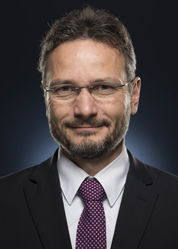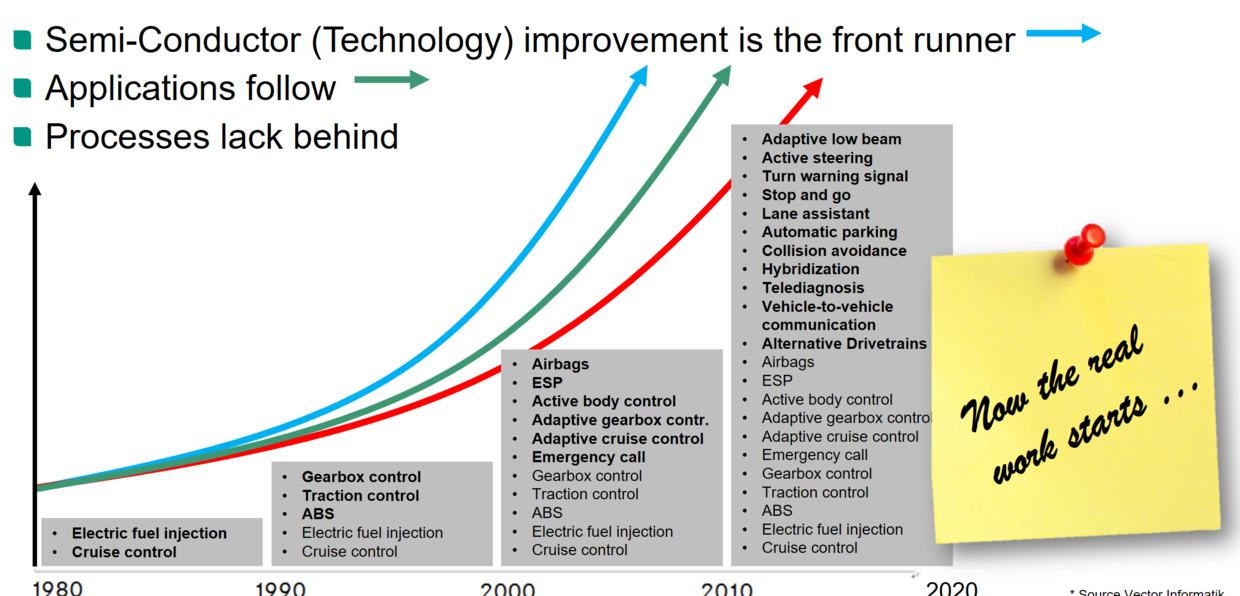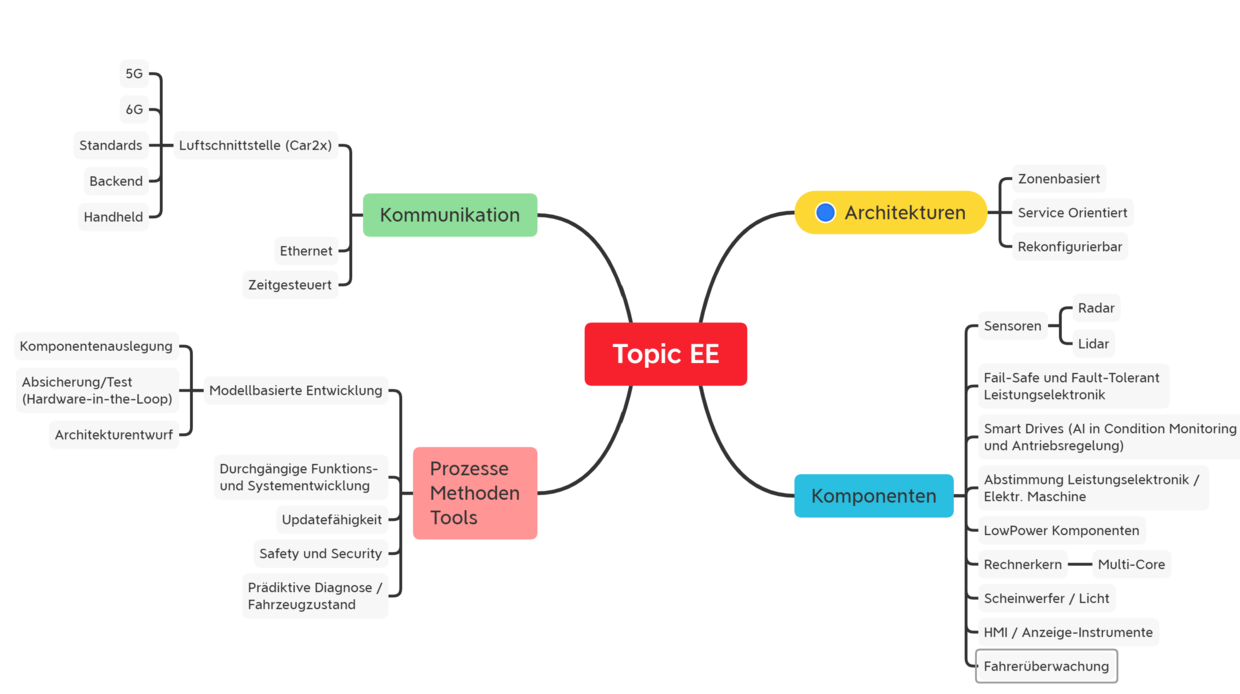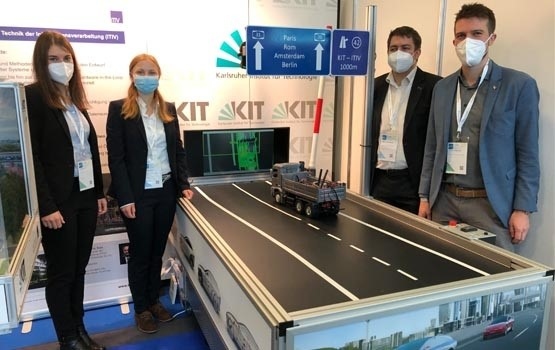Electrics and Electronics (E/E)
Introduction
Automotive electrical/electronic development is undergoing a rapid change process. High-performance technologies allow the integration of more and more functionality, which has a differentiating effect on competition and is increasingly shaping the brands. Current trends include electromobility, driver assistance systems for longitudinal and lateral dynamics, and all forms of services via the air interface. However, the technological offering and the associated functional development are ahead of the processes, methods and tools for mastering the development processes.


The development and testing processes of highly automated driving functions as a precursor to autonomous driving in particular face major challenges. On the one hand, conventional test methods such as X-in-the-loop for proving functional safety are still applicable in principle, but on the other hand they do not per se answer the question of which test cases must be derived from the a priori partially unknown requirements on the system. While approaches of broad-scale testing by prototype vehicles can theoretically lead to a statistical proof of safety for these functions, they are not feasible in practice for economic reasons. In contrast, there are approaches of scenario-based testing and simulation methods, which, however, cannot provide any statement on the required test coverage when considered in isolation.
Research Focus

Architectures
Signal-based architectures have dominated the component topology of vehicles over the last 20 years. CAN protocols were the basis for an event-driven design that was increasingly divided into domains and communicated via a central gateway. However, this does not work for dynamic function adaptations and a radical reduction in the number of ECUs. Service-based architectures are therefore gaining ground. How mixed forms become possible in a transformation process and how to design a data- and service-based architecture is the focus of our research.
Processes, Methods and Tools
The classic development process for a new vehicle takes 60 months. But in that time, the electronics are often already obsolete. In addition, a large part of the added value is created by software, which allows more flexible design methods. Thus, in addition to the procedural V-model, agile methods are moving in, although they have to be combined with classic vehicle construction. In addition, in the area of validation, the long-held formula "no test without requirement - no requirement without test" can no longer be upheld, since the number of variants is exploding, especially for self-learned functions. Thus, we are working on new, simulative test methods with virtual prototypes and next-generation X-in-the-loop. The management of configurations and the consistency of the design steps complete our work.
Components
Centralized high-performance computers, often based on multi-core structures, are gradually replacing classic ECUs with cost-optimized micro-controllers. Field sensing is done with increasingly powerful and inexpensive sensors. A variety of physical methods using visible optics, infrared, high frequency, radar, etc. are emerging. Sensor fusion has to be realized within the architectures and to stimulate the actuator technology. Miniaturization, safety, security and robustness are the core topics of our research.
Communication
The vehicle as a closed system no longer exists. Car-2-X communication will be indispensable for the new functions of automated driving. In addition, communication is required for function updates and upgrades. Integrating standards such as 5G and upcoming 6G and creating the technical conditions at the vehicle's interfaces are our challenges. Of course, the technical realizations are strongly linked to the operations, which must be secure and robust.
Associated Institutes
ETI - Institute of Electrical Engineering
IAI - Institute for Automation and Applied Informatics
IHE - Institute of Radio Frequency Engineering and Electronics
IRS - Institute of Control Systems
ITI - Institute of Theoretical Informatics
ITIV - Institute for Information Processing Technologies
MRT - Institute of Measurement and Control Systems

On October 20 and 21, 2021, the congress "Electronics In Vehicles" (ELIV), the most important industry meeting of electronics experts in automotive technology, took place in Bonn with an associated exhibition. ITIV was represented there by Prof. Sax and four colleagues from his working group as congress participants and exhibitors. At the exhibition booth, exhibits on platooning of electric buses (TEMPUS project) as well as on the implementation of automated driving functions in model vehicles (as part of the teaching program at ITIV) gave an impression of the variety of topics covered by the institute and the Mobility Systems Center. The exposed location of the booth directly next to one of the congress lecture rooms provided good opportunities for discussions with industry representatives at eye level.
The congress lecture program, which was divided into four parallel tracks, provided helpful impulses for future project ideas and at the same time served as a comparison of the orientation of one's own scientific work with the projects and research goals of current and potential project partners. During the breaks between presentations, it also became clear that the online formats of the past months cannot replace personal networking at the booth. For ITIV, participation was therefore profitable all around and will be considered again for the next congress in 2023.
